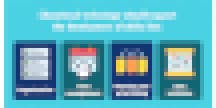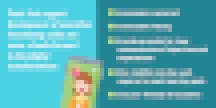A critical component of any student’s educational journey is learning how to be better organized, complete tasks independently and persevere when an assignment is difficult. We’ve all seen (or even been) that woefully disorganized student: always turning in late assignments, arriving to class empty-handed or misplacing instructional materials. We describe students like this as lacking executive function skills—working memory, inhibitory control and cognitive flexibility—and many of us tend to think that these kids will never get it together.
Executive function skills are rarely taught, either at home or in school. There’s little agreement over how to help kids who aren’t keeping up with their peers or who should be responsible for administering such help. Parents expect schools to teach these skills, whereas schools assume that parents will.
Humans are not born with these skills, but we all have the potential to master them, given a little help and practice. Simply throwing a handful of digital platforms at students, however, is hardly a solution and may, in fact, compound the issue.

Where does the problem lie?
Although critics argue for a return to pencil and paper, blaming technology for poor student outcomes, this argument misses the point. The problem is not the technology itself but rather the lack of a central system to help students organize their digital tools.
Many schools have purchased communication tools and portals, but parents and students generally must log in to gain insights. Students often have a different organizational experience with each class. Teachers have little time to plan or communicate with peers about what is going on in their classrooms. Unfortunately, this means that students’ assignments in other classes, extracurriculars and remediation plans are rarely taken into consideration.
The focus on improving organization is almost always teacher facing, not from the learner’s perspective. Teachers have many tools for organizing and delivering assignments and grades. Students need a single tool where they can organize their own academic lives.
What do students say about organization in the digital classroom?
In April of 2019, Hāpara conducted a series of focus groups with students around the world. We sought to answer the following questions:
- How is technology used in the classroom?
- How do learners keep track of digital assignments?
- How do learners prefer to organize themselves?
- What is the daily digital workflow like for learners?
Alarmingly, we discovered that, on an average day, a student has to navigate between as many as 10 different platforms—in a single class! Students expressed frustration with not knowing where to find assignments. Most said they didn’t have a preferred organization system; they just asked the kid in class that seemed to be the most organized.
During classroom observations, students were frequently off task or generally confused about what they were supposed to be doing—signaling a lack of clarity and meaning for students. They often didn’t know what to do because they were just trying to keep up with all of the platforms they were required to use. They did not understand the value of the assignment, and they weren’t invested in completing work because it wasn’t meaningful for them.

How can schools bridge the gap?
Technology has to keep up with the needs of students, not the other way around. If schools want to empower 21st-century learners, the platforms they select must diminish the confusion and frustration that is happening with today’s students. Clarity and visibility for the student have got to be the basis for developing learning technology.
Planning must be done from the learner back to the school. The student’s world—during and after the school day—needs to be considered. The system of organization should be focused on clear communication of objectives and expectations, as well as visibility into the work required to reach learning goals. And this must be presented in a way that is every bit as organized as we expect the students themselves to be.

“The ideal (student organization) solution automatically pulls useful and appropriate information from student interactions in digital platforms, and presents it in a well-structured and intuitive interface that is fun, engaging and useful for students,” says Nara Chillivuri, Hāpara’s Director of Product. Hāpara Student Dashboard gathers assignments, notifications and resources from platforms like Google Classroom, G Suite and Hāpara Workspace in one central dashboard, so learners can easily sort through all the noise in the digital learning space and get down to what’s most important: learning.
“One of the things that we at Hāpara notice when we meet with customers about their usage data of G Suite, Google Classroom and Hāpara, is that many students are lagging behind in managing their work in the cloud: low device access during and outside of school, limited creation of files in G Suite, less than 60 minutes of writing in Google docs, little to no interaction with their teachers or peers. In conversations with students, teachers and school leaders, we’ve discovered that the many digital tools kids have to interact with can overwhelm and cause meltdown. That’s why we developed the Hāpara Student Dashboard to enable students to review and access everything in one place, whether on a desktop, laptop or mobile device,” says Robin Poncia, VP of Marketing at Hāpara and former school teacher, counselor and administrator.



